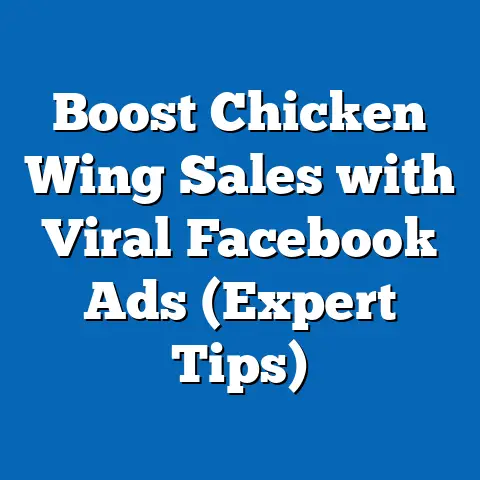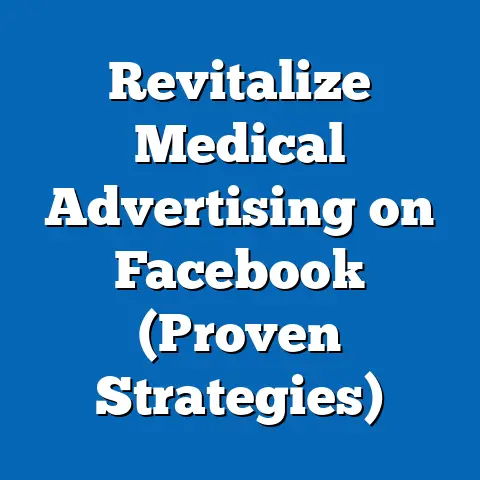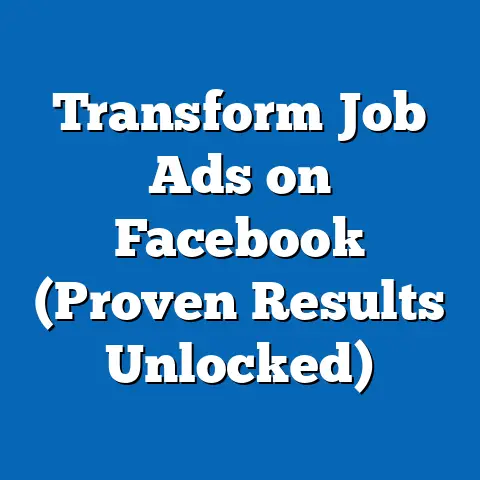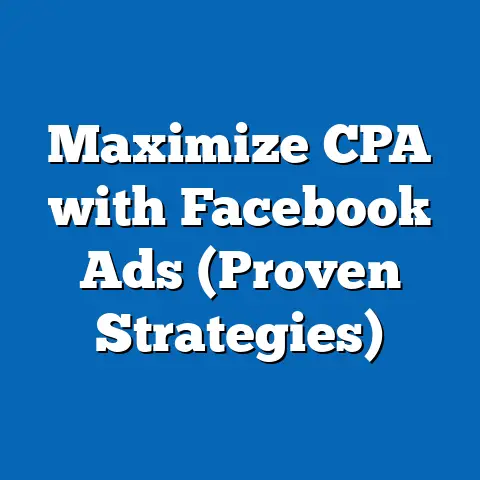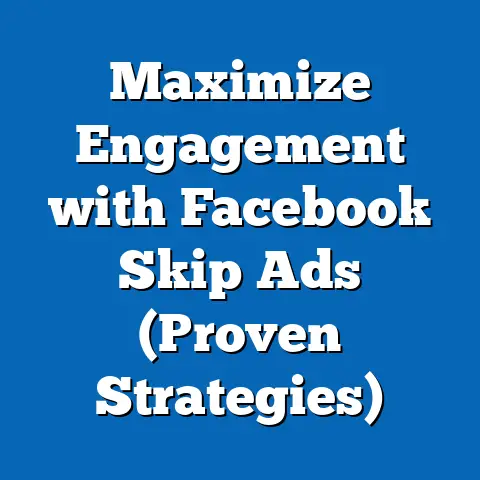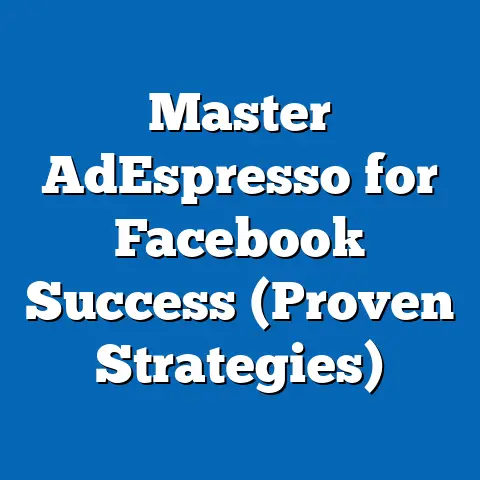Boost Lead Gen with Facebook Ads (Proven Strategies Inside)
Imagine a bustling digital marketplace where billions of users scroll through their feeds daily, each interaction a potential opportunity for businesses to connect. In this landscape, Facebook remains a titan, with over 2.9 billion monthly active users as of Q2 2023, according to Meta’s latest earnings report. For businesses, especially small and medium-sized enterprises (SMEs), this platform isn’t just a social network—it’s a goldmine for lead generation.
Digital advertising spending worldwide is projected to reach $701 billion in 2023, with social media ads accounting for nearly 20% of that figure, per eMarketer data. Within this space, Facebook Ads continue to dominate due to their unparalleled targeting capabilities and cost-effectiveness. For context, businesses can reach 1,000 users for as little as $0.97 on Facebook, compared to $7.19 on Google Ads, according to a 2022 WordStream report.
Demographically, Facebook’s user base spans a wide range, with 70% of adults in the U.S. using the platform, as reported by Pew Research Center in 2023. Notably, the 25-34 age group represents the largest segment at 31.5% of users, followed by 18-24-year-olds at 23.8%. This diversity makes it a fertile ground for businesses targeting varied audiences, from Gen Z consumers to Baby Boomers.
Section 1: Why Facebook Ads for Lead Generation?
The Power of Precision Targeting
Facebook Ads offer one of the most sophisticated targeting systems in digital marketing. With access to user data on interests, behaviors, demographics, and even life events, businesses can zero in on their ideal customer profiles. According to Meta, advertisers can reach over 200 million small businesses’ potential customers using these tools.
For instance, a 2022 study by Hootsuite found that 78% of businesses using Facebook Ads reported higher conversion rates compared to other platforms due to precise audience segmentation. This is particularly effective for lead generation, where identifying high-intent users is critical.
Cost-Effectiveness Compared to Alternatives
While costs are rising, Facebook Ads remain relatively affordable. The average cost-per-lead (CPL) on Facebook is $19.68 across industries, significantly lower than LinkedIn’s $75.50, as reported by HubSpot in 2023. For industries like real estate or finance, where leads are high-value, this cost efficiency translates to substantial savings.
Moreover, Facebook’s Lead Ads format—designed specifically for capturing contact information—reduces friction by pre-filling forms with user data. A 2021 case study by Meta showed that businesses using Lead Ads saw a 20% lower CPL compared to traditional landing page campaigns.
Historical Trends: Evolution of Facebook Ads
Looking back, Facebook Ads have evolved significantly since their launch in 2007. Initially focused on brand awareness, the platform introduced Lead Ads in 2015, revolutionizing how businesses collect data. By 2019, over 3 million advertisers were using this format, per Meta’s annual report.
Today, with machine learning and AI-driven algorithms, ad delivery is more optimized than ever. Historical data from Statista shows that ad engagement rates have grown from 0.9% in 2015 to 1.2% in 2023, reflecting improved relevance and user interaction.
Section 2: Key Demographics and Audience Insights
Who’s on Facebook? Breaking Down the Numbers
Understanding Facebook’s user base is crucial for effective lead generation. As of 2023, 54% of users are male and 46% are female, with usage peaking in urban areas (75% of users), according to Statista. Geographically, India leads with 314 million users, followed by the U.S. at 179 million.
Age-wise, while younger users dominate, older demographics are growing. Pew Research notes that 50% of U.S. adults aged 50-64 use Facebook daily, up from 40% in 2018. This trend highlights opportunities for businesses targeting mature audiences, such as retirement planning services or healthcare providers.
Behavioral Patterns: When and How Users Engage
Timing and content type also matter. Data from Sprout Social indicates that the best times to post ads are midweek (Tuesday-Thursday) between 10 a.m. and 2 p.m., when engagement rates peak at 1.5%. Additionally, video content drives 6x more engagement than static images, a trend that has held steady since 2020.
Demographic differences also influence behavior. For example, Gen Z users (18-24) are 30% more likely to engage with Stories Ads, while Millennials (25-34) prefer News Feed placements, per a 2022 Kantar study. Tailoring ad formats to these preferences can significantly boost lead capture rates.
Section 3: Proven Strategies for Lead Generation with Facebook Ads
Strategy 1: Leverage Lead Ads for Seamless Data Capture
Facebook Lead Ads are a cornerstone of effective lead gen campaigns. These ads allow users to submit their information without leaving the platform, reducing drop-off rates by 40%, according to Meta’s 2022 advertiser survey. For example, a fitness brand reported a 35% increase in sign-ups for free trials after switching to Lead Ads.
To optimize, use concise forms with minimal fields—name, email, and phone number yield the best completion rates at 85%, per AdEspresso. Additionally, offer a clear value proposition, such as a free eBook or discount code, to incentivize submissions.
Strategy 2: Hyper-Targeted Custom Audiences
Custom Audiences let you target users based on existing data, like email lists or website visitors. A 2023 study by WordStream found that campaigns using Custom Audiences had a 50% higher click-through rate (CTR) compared to broad targeting. For instance, retargeting website visitors who abandoned carts can recover 26% of lost leads, per Meta data.
Combine this with Lookalike Audiences to reach users similar to your best customers. Businesses report a 2-3x increase in conversion rates using Lookalikes, making this a powerful tool for scaling lead gen efforts.
Strategy 3: A/B Testing for Optimization
Testing is non-negotiable in today’s competitive ad space. By experimenting with different ad creatives, copy, and audiences, businesses can identify what resonates most. According to HubSpot, 60% of marketers who A/B test their Facebook Ads see a 25% improvement in ROI.
Start by testing variables like headlines or images, keeping budgets small ($50-100 per variant). Data from AdEspresso shows that ads with emotional appeals (e.g., “Don’t Miss Out!”) outperform generic messaging by 15% in terms of CTR.
Strategy 4: Use Video Ads to Build Trust
Video content is king for engagement and trust-building. A 2023 Social Media Examiner report found that 68% of consumers are more likely to share personal information after watching a brand video. Short, value-driven videos (15-30 seconds) explaining your offer can increase lead form submissions by 20%, per Meta.
For example, a real estate agency using video tours of properties saw a 45% uptick in lead inquiries compared to static image ads. Ensure videos are mobile-optimized, as 85% of Facebook users access the platform via smartphones, per Statista.
Strategy 5: Optimize for Mobile and Speed
With mobile usage dominating, ad experiences must be seamless. Pages that load in under 3 seconds see a 22% higher conversion rate, according to Google’s 2022 mobile speed report. Use Instant Forms in Lead Ads to keep users in-app, avoiding slow external landing pages.
Additionally, prioritize vertical formats like Stories, which fill the mobile screen and have a 35% higher completion rate for lead forms compared to News Feed ads, per a 2023 Hootsuite study.
Section 4: Measuring Success: Key Metrics and Tools
Essential Metrics to Track
Lead generation campaigns hinge on measurable outcomes. Key metrics include Cost-Per-Lead (CPL), with an industry average of $19.68 on Facebook, per HubSpot. Conversion Rate—percentage of clicks turning into leads—averages 9.2%, though top performers hit 12-15%, per WordStream.
Also, monitor Click-Through Rate (CTR), which averages 0.9% but can reach 2% with optimized creatives. Use these benchmarks to gauge campaign health and adjust strategies accordingly.
Tools for Deeper Insights
Facebook Ads Manager provides robust analytics, but third-party tools like Hootsuite or Sprout Social offer comparative data across platforms. For attribution, Google Analytics can track post-click behavior, revealing that 30% of leads from Facebook Ads convert within 7 days, per a 2022 study.
Regularly review data to spot trends. For instance, if CPL spikes above $25, it may signal audience fatigue or poor creative—time to refresh targeting or messaging.
Section 5: Case Studies and Real-World Examples
Case Study 1: E-Commerce Brand Boosts Leads by 300%
An online clothing retailer used Facebook Lead Ads to offer a 10% discount code in exchange for email sign-ups. By targeting women aged 25-44 with interests in fashion, they achieved a CPL of $8.50, well below the industry average of $15.20, per HubSpot. Over 3 months, lead volume grew by 300%, driving a 50% increase in email campaign revenue.
Key takeaway: Clear incentives paired with precise targeting can yield outsized results.
Case Study 2: B2B Service Sees 40% Lower CPL with Lookalike Audiences
A SaaS company targeting small businesses used Lookalike Audiences based on their top 1,000 customers. Their CPL dropped from $35 to $21, a 40% reduction, while lead quality improved—20% of leads converted to trials, per Meta’s case study data. This demonstrates the power of data-driven audience expansion.
Key takeaway: Leverage existing customer data to find high-value prospects.
Section 6: Challenges and Pitfalls to Avoid
Rising Costs and Ad Fatigue
As mentioned, CPC on Facebook rose 17% in 2023. Ad fatigue—when users see the same ad too often—can also tank performance, with CTR dropping by 50% after 5 exposures, per AdEspresso. Rotate creatives every 7-10 days to maintain freshness.
Privacy Regulations and Data Limitations
With Apple’s iOS 14.5 update in 2021 and GDPR compliance, tracking has become harder. Meta reported a 15% drop in ad attribution accuracy post-iOS update. Focus on first-party data (e.g., Lead Ads forms) to mitigate reliance on third-party cookies.
Demographic Missteps
Misaligned targeting wastes budget. For instance, targeting Gen Z with retirement services yields near-zero leads. Use Audience Insights in Ads Manager to validate demographics before launching campaigns.
Section 7: Visualizing the Data
Describing a Potential Chart: Lead Gen Metrics Over Time
Imagine a line chart titled “Facebook Ads Lead Gen Metrics (2018-2023).” The X-axis shows years, and the Y-axis displays two metrics: Average CPL (in dollars) and Conversion Rate (in percentage). Data points reveal CPL rising from $15.50 in 2018 to $19.68 in 2023, while Conversion Rate improves from 7.5% to 9.2% over the same period, sourced from HubSpot and WordStream.
This visualization would highlight the trade-off between rising costs and better optimization, underscoring the need for strategic adjustments.
Describing a Bar Graph: CPL by Industry
Picture a bar graph titled “Average Cost-Per-Lead by Industry on Facebook Ads (2023).” Bars represent industries like Real Estate ($23.50), Technology ($41.20), and Retail ($10.80), based on HubSpot data. This would illustrate how lead costs vary, guiding budget allocation for specific sectors.
Section 8: Broader Implications and Future Trends
The Role of AI and Automation
AI is reshaping Facebook Ads. Meta’s Advantage+ campaigns, which automate targeting and placement, have boosted lead volume by 25% for early adopters, per a 2023 Meta report. Expect AI to further refine ad delivery, lowering CPL over time.
Shifting Demographics
As Gen Z matures and older users increase, ad strategies must adapt. By 2025, Statista projects Gen Z will make up 40% of Facebook’s user base in key markets. Brands targeting youth will need ephemeral, authentic content like Stories, while older demographics may respond better to value-driven offers.
Privacy and Personalization Balance
With privacy laws tightening, lead gen will pivot toward consent-based data collection. Lead Ads and opt-in incentives will become even more critical, as 62% of users are willing to share data for personalized offers, per a 2023 PwC survey.
Final Thoughts
Facebook Ads remain a powerhouse for lead generation, offering unmatched reach and targeting at a competitive cost. By implementing strategies like Lead Ads, Custom Audiences, and video content, businesses can navigate rising costs and privacy challenges to capture high-quality leads. As the platform evolves, staying data-driven and adaptable will be key to sustained success.

